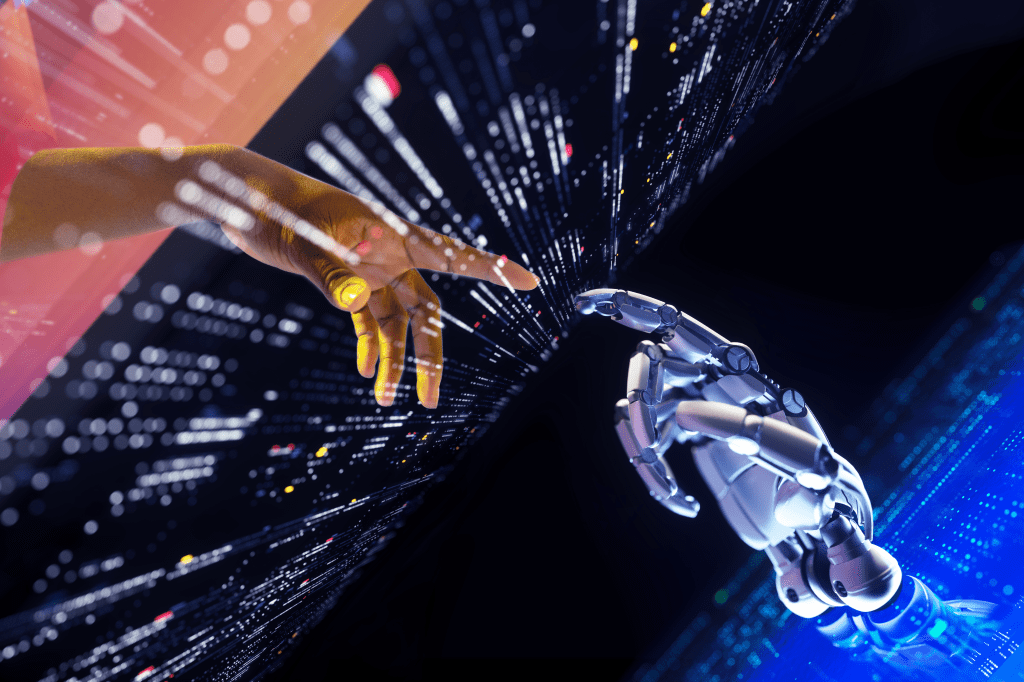Imagine a world where your business operates autonomously to unlock its full potential, orchestrating decisions, negotiating deals and innovating relentlessly without your constant intervention. It’s not a distant dream, it’s the inevitable reality of the agentic web: a term entrepreneurs, founders, the C-suite and marketers are going to need to become familiar with. Fast.

Why? It’s poised to reshape the very fabric of how we work, create and succeed as soon as 2025.
Large language models (LLMs) are proliferating at breakneck speed, rapidly becoming more intelligent and capable of solving increasingly complex problems. But LLMs aren’t the true game-changer, it’s the agentic web they will facilitate: a new layer of the internet designed for AI-first systems. Most of the single-use LLM systems individuals are currently familiar with – think GPT – require human intervention or prompting. AI-first is entirely different.
More than a technological progression, it’s a philosophical shift. Businesses are moving from tools designed to assist human efforts to systems that act as intelligent partners, guided by human intention but autonomous in how they operate. This is eliminating barriers of human scale, efficiency and resource across every function of the business.
The agentic web is the latest in the layered history of the internet, like the connectivity, web, search, social and cloud layers before it; but despite the tectonic shifts earlier layers have delivered, they have also introduced fragmented systems and siloed solutions. The agentic layer transcends this, enabling autonomous systems to intelligently navigate complexity and drive outcomes across interconnected digital environments.
More than just enhancing human efforts, this reimagines the role of businesses in a connected, intelligent economy. It is an incredible shift unfolding across three distinct eras, leading us to a fully interconnected agentic economy already redefining how value is created, shared and scaled.
Era One: The SaaS-a-fication of AI (aka The Age of Tragedy)
The first era of the agentic web is one of fragmentation and unrealised potential. It mirrors the early days of the internet, when new technologies were often met with skepticism, misuse and resistance.
Schools and universities bristled at the emergence of Wikipedia, seeing it as a threat to academic integrity. Students were warned against its use, yet over time, its collaborative model proved invaluable. Wikipedia didn’t undermine education, it transformed it.

A similar pattern is unfolding with generative AI tools. These same educational institutions are divided: some ban its use entirely, fearing it might encourage dishonesty, while others see its potential to personalise learning and expand creative possibilities.
This resistance isn’t new; it’s a familiar response to any truly transformative technology.
In the business world, this era is defined by AI being confined to narrow, limited roles.
We refer to AI as ‘assistants’, confining it to repetitive, humble tasks like drafting emails, summarising documents or processing basic data. This relegates AI to the sidelines as a tool for efficiency, rather than empowering it as a true collaborator.
This isn’t just a matter of habit, developing AI models capable of high-level commercial inference is extraordinarily expensive. Reports estimate that creating a custom AI model for commercial use can cost anywhere between $500,000 and $2 million initially, with significant ongoing costs for maintenance and retraining as new data emerges (Forbes, 2023; McKinsey, 2022).
We’re witnessing the SaaS-a-fication of AI: instead of spending enormous amounts of capital, companies now juggle a growing collection of isolated AI ‘buttons’ performing a single task without talking to each other, much like managing dozens of SaaS subscriptions.
Instead of enabling meaningful collaboration, these fragmented systems create a chaotic and disconnected landscape. This entire period is a missed opportunity: a reminder of how underutilised generative AI still is.
Era Two: The rise of agentic teams
The second era introduces a fundamental shift in how we think about harnessing the potential of AI. We’re beginning to shake the fear of AI overlords born out of Hollywood and embracing its inhuman nature.
This is the era of agentic teams: dynamic partnerships where AI works alongside humans, operating as integral team members with autonomy and agency.

Agentic teams elevate AI and humans to accomplish what neither could alone. By leveraging human-in-the-loop (HITL) processes, they combine AI’s unparalleled speed, precision and scalability with the creativity, ethical judgment and emotional intelligence that humans can offer.
To succeed, agentic teams must be built on a foundation of critical platforms that act as the major nodes of this new layer on the web.
These platforms are distinguished by their immutable records: data that is foundational to business functions and reliably consistent. Examples include accounting platforms that track financial transactions, HR systems that store employee records and payment processors that handle transactions and tax calculations.
Horizontal platforms like Decidr play a central role in this transformation by integrating data seamlessly across an organisation. To achieve this we create “high-context” AI systems, where data from every corner of the business – financial transactions, workflows, customer interactions and market signals – is unified into a cohesive whole.
By building on these essential nodes, these platforms help businesses make the most of their data without the expense of complex normalisation. This establishes a foundation for agentic systems that are intelligent, adaptive and capable of working autonomously, all while staying guided by human oversight.
Rather than relying on fragmented datasets, horizontal platforms provide AI with a complete view, giving it the nuance to understand relationships, identify opportunities and predict outcomes more effectively.
These platforms also create tailored systems aligned with your goals, often offering businesses the opportunity to reduce their existing SaaS costs.
Era Three: The ecosystem era
The final era of the agentic web represents the realisation of its full potential: a fully interconnected agentic economy.
In this phase – which is just on the horizon – businesses evolve into autonomous entities that communicate and transact with one another in real time, creating a seamless web of intelligence and interaction.
This transformation begins with the major nodes established in Era Two. Platforms like Decidr leverage these nodes to create the agentic web layer, enabling every business with a website to rapidly transform into an AI-powered business.
Through Decidr’s agentic platform, businesses can activate an AI parallel: an autonomous AI-first business that operates alongside their existing websites. By connecting to the major nodes via API, Decidr ensures these AI parallels operate with high-context data, empowering them to make intelligent decisions, adapt to changing conditions, and collaborate seamlessly with other AI systems. They can make autonomous decisions and actions guided by the aspirations and ethics of their founders and leaders who continually ‘tune’ their AI business via natural language, powered by an AI decision support system.

There are so many practical examples of how businesses will interact with the agentic web, but here are three real examples of conversations we’re having with businesses about what the very near future holds:
- Enhanced retail experience in-store and online
In-store, Decidr agentic AI web assistants will interact with shoppers via augmented reality devices or apps to guide them to products, suggest alternatives, or showcase promotions. Online, they manage real-time customer personalisation based on preferences and inventory. - Automated talent acquisition
HR departments utilise Decidr agentic AI that autonomously scans job boards, social media profiles, and applicant data to identify and engage the best-fit candidates. Agents can also schedule interviews and provide tailored assessments for each candidate. - Autonomous supply chain optimisation
Companies use agentic web-enabled systems that interact with suppliers, logistics partners, and market trends to autonomously adjust inventory levels, place purchase orders, and optimise delivery routes in response to demand changes. This reduces waste, minimises delays, and ensures cost-efficient supply chain management.
The agentic web transforms businesses from isolated entities into dynamic participants in a thriving, intelligent economy. This isn’t just about improving efficiency. Freed from the constraints of routine tasks, we gain the space to focus on strategy, creativity and ethical decision making, unlocking possibilities we’ve only just begun to imagine and many we can’t yet fathom.
The question is no longer whether we’ll embrace this transformation, but how far it can take us.
David Brudenell, is the Executive Director of Decidr.
Look back on the week that was with hand-picked articles from Australia and around the world. Sign up to the Forbes Australia newsletter here or become a member here.


